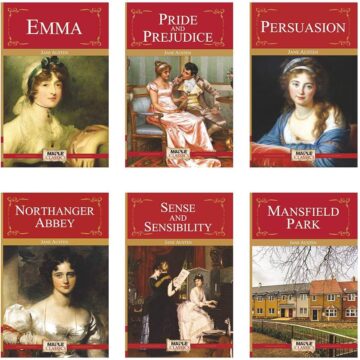Abigail Tulenko at Aeon Magazine:
 Austen’s keen observation extends to her rich aesthetic sensibility. And, yet, beauty figures strangely in a naturalist’s worldview. Darwin, who develops the naturalistic worldview to a new extreme, was deeply troubled by ‘ornament’ in the animal kingdom as a potential threat to his theory of natural selection. In Aesthetics After Darwin (2019), the philosopher Winfried Menninghaus describes Darwin’s decades-long enquiry into ornament as an obsession driven by a central question: how to explain instances of seemingly superfluous beauty within his empirical scientific worldview? In The Descent of Man (1871), Darwin marvels that ‘The development, however, of certain structures’ – such as horns, feathers, and so on – ‘has been carried to a wonderful extreme; and in some cases to an extreme which, as far as the general conditions of life are concerned, must be slightly injurious.’ The peacock’s feathers are superfluous to its biologic fitness; their cumbersome size may actually be antithetical to any one bird’s individual survival. And so their existence seems to fly in the face of naturalistic explanation.
Austen’s keen observation extends to her rich aesthetic sensibility. And, yet, beauty figures strangely in a naturalist’s worldview. Darwin, who develops the naturalistic worldview to a new extreme, was deeply troubled by ‘ornament’ in the animal kingdom as a potential threat to his theory of natural selection. In Aesthetics After Darwin (2019), the philosopher Winfried Menninghaus describes Darwin’s decades-long enquiry into ornament as an obsession driven by a central question: how to explain instances of seemingly superfluous beauty within his empirical scientific worldview? In The Descent of Man (1871), Darwin marvels that ‘The development, however, of certain structures’ – such as horns, feathers, and so on – ‘has been carried to a wonderful extreme; and in some cases to an extreme which, as far as the general conditions of life are concerned, must be slightly injurious.’ The peacock’s feathers are superfluous to its biologic fitness; their cumbersome size may actually be antithetical to any one bird’s individual survival. And so their existence seems to fly in the face of naturalistic explanation.
In his early writings, Darwin ‘conceived of beauty first of all as scandalous excess, as potentially self-destructive luxury,’ writes Menninghaus.
more here.
Enjoying the content on 3QD? Help keep us going by donating now.
